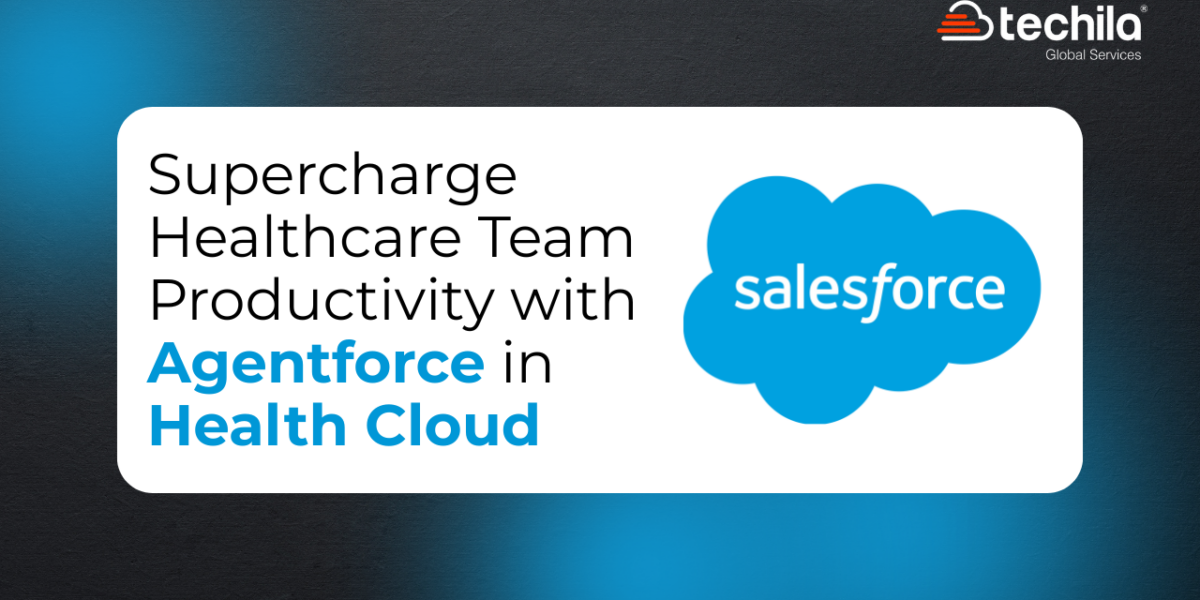Salesforce Data Cloud has revolutionised how businesses handle customer data, offering a unified platform that integrates, analyses and activates customer insights. As companies increasingly depend on data to drive decisions, Salesforce Data Cloud is a powerful tool for achieving a comprehensive view of customers and enhancing marketing strategies. This guide provides an in-depth look at Salesforce Data Cloud, offering tips and tricks from industry experts to help you master this transformative platform.
What is Salesforce Data Cloud?
Salesforce Data Cloud is a powerful Customer Data Platform (CDP) designed to help businesses unify and leverage customer data across various touchpoints. It enables a 360-degree view of customers, which is critical for personalised marketing, improved customer engagement, and data-driven decision-making.
- Evolution: Salesforce Data Cloud has evolved significantly over time. Initially launched as Customer 360 Audiences, it was later rebranded as Salesforce CDP, Genie, and finally as Salesforce Data Cloud. Each rebranding introduced new features and capabilities, reflecting Salesforce’s commitment to continuously improving its platform to meet the needs of modern businesses.
- Purpose: The primary goal of Salesforce Data Cloud is to integrate data from multiple sources, providing a unified view of each customer. This unified view allows businesses to develop more effective marketing strategies, improve customer service, and make better-informed business decisions.
Understanding the Core Capabilities of Salesforce Data Cloud
Salesforce Data Cloud comprises four core capabilities: ingestion, unification, segmentation, and activation. Each capability is essential for transforming raw data into actionable insights to drive business success.
Ingestion: Seamlessly Gather Data
- Data Collection: Ingestion gathers data from various sources and puts it into Salesforce Data Cloud. These sources include social media platforms, CRM systems, marketing tools, and more. Seamlessly gathering data from multiple channels is crucial for creating a comprehensive view of customer interactions.
- Zero-Copy Data Capability: Salesforce Data Cloud’s zero-copy data capability is invaluable for businesses that manage large data warehouses or data lakes. This feature allows data to be integrated without physically moving, reducing latency and maintaining data integrity. This ensures that businesses can access real-time insights without the complexity and cost associated with data duplication.
Unification: Creating a Single Customer View
- Data Merging: Unification involves merging data from different sources to make a complete profile for each customer. This step is critical for eliminating duplicates and inconsistencies, which can lead to inaccurate or outdated information. Businesses can ensure an accurate and up-to-date view of each customer by unifying data.
- Unified Profile: A unified customer profile is essential for personalised marketing and effective customer engagement. For example, if customers update their contact information on one platform, Salesforce Data Cloud ensures this change is reflected across all connected systems. This unified view allows businesses to interact with customers consistently and personally across all touchpoints.
Segmentation: Targeting the Right Audience
- Audience Segmentation: Segmentation categorises customers based on specific criteria such as behaviour, preferences, and demographics. Salesforce Data Cloud offers powerful segmentation tools that allow businesses to create detailed customer segments. These segments can tailor marketing messages and campaigns to specific audiences.
- Personalised Campaigns: Segmentation is critical to effective marketing. For instance, businesses can create segments of new customers to develop targeted welcome campaigns or identify high-value customers for exclusive offers. Companies can enhance engagement and drive more profitable results by ensuring relevant marketing messages to the audience.
Activation: Making Data Actionable
- Real-Time Marketing: Activation uses the insights from Salesforce Data Cloud to execute real-time marketing campaigns. By integrating Data Cloud with other marketing tools and platforms, businesses can deliver personalised messages to customers at the right time across the proper channels.
- Targeted Engagement: For example, a business might push a segment of recent customers to an advertising platform for retargeting. This ensures marketing messages reach the most relevant audience, leading to more increased engagement and conversion rates. Salesforce Data Cloud’s activation capabilities enable businesses to turn data into meaningful actions that drive business success.
Integration Capabilities of Salesforce Data Cloud
One of Salesforce Data Cloud’s standout features is its capability to integrate seamlessly with both Salesforce and non-Salesforce products. This flexibility enhances its value and allows businesses to leverage their data across various platforms.
Integrating Salesforce Data Cloud with Salesforce Products
- Salesforce Marketing Cloud: Salesforce Data Cloud can feed unified customer profiles into Salesforce Marketing Cloud, enabling companies to create favourably personalised and targeted marketing campaigns. This integration ensures marketing efforts are based on the most accurate and up-to-date customer data.
- Salesforce Sales Cloud: By integrating with Salesforce Sales Cloud, Data Cloud provides sales teams with a 360-degree view of customers. This comprehensive view helps sales teams develop more informed and effective sales strategies, improving the chances of closing deals.
- Salesforce Service Cloud: Integration with Salesforce Service Cloud equips customer service teams with detailed customer profiles. Service teams can provide more personalised and efficient support, improving customer satisfaction.
- Salesforce Commerce Cloud: By integrating with Salesforce Commerce Cloud, businesses can leverage customer data to create personalised shopping experiences. This can guide to higher customer engagement, increased sales, and enhanced customer loyalty.
Integrating Salesforce Data Cloud with Non-Salesforce Products
- Snowflake: Salesforce Data Cloud’s zero-copy data-sharing capability allows businesses to access data stored in Snowflake without physically moving it. This ensures that data integrity is maintained while reducing latency, which is crucial for real-time insights.
- Google Cloud: Integration with Google Cloud enables seamless data exchange and enhances analytics capabilities. This allows businesses to analyse more sophisticated data and gain deeper insights into customer behaviour.
- Amazon S3: Salesforce Data Cloud can unify data stored in Amazon S3, ensuring a comprehensive view of customer interactions. This integration is especially valuable for businesses that store large volumes of data in S3.
- Microsoft Azure: By integrating with Microsoft Azure, businesses can leverage Azure’s powerful data processing and storage capabilities. This integration enhances the ability to analyse and utilise customer data effectively.
- Databricks: Salesforce Data Cloud can connect with Databricks to enable advanced analytics and machine learning. This integration allows businesses to analyse more complex data and gain predictive insights.
Best Practices for Implementing Salesforce Data Cloud
Implementing Salesforce Data Cloud requires careful planning and strategic execution. By following these best practices, businesses can guarantee a successful implementation that maximises the value of their customer data.
Align Your Organisation
- Designate a Clear Owner: Assigning a dedicated person or team to oversee the implementation of Salesforce Data Cloud is essential. This ensures accountability and a clear point of contact for all conclusions related to the project.
- Conduct Cross-Functional Workshops: Engage representatives from various departments in the planning process. These workshops help gather input from different perspectives, ensuring the implementation meets the organisation’s needs.
- Define Roles and Responsibilities: Evidently outline the roles and responsibilities of each team concerned in the implementation. This helps prevent confusion and ensures everyone knows their part in the process.
Choose Impactful Use Cases
- Identify Business Objectives: Start by identifying the specific business objectives you want to achieve with Salesforce Data Cloud. Whether improving sales efficiency, enhancing customer segmentation, or optimising marketing campaigns, having clear goals ensures alignment and focus.
- Prioritise Feasible Use Cases: Focus on use cases that offer significant benefits and are manageable in the implementation effort. Consider resource availability, data readiness, and technical complexity when prioritising use cases.
- Prototype and Validate: Before committing to full-scale implementation, build prototypes of selected use cases to test their feasibility and effectiveness. This allows you to refine the approach and ensure the chosen use cases deliver the desired results.
Measure Success Effectively
- Define KPIs: Establish key performance indicators (KPIs) that align with your business objectives. These KPIs should be specific, measurable, attainable, realistic, and timely (SMART) to effectively track the impact of Salesforce Data Cloud on your business.
- Monitor Data Quality: Ensure that the data being ingested into Salesforce Data Cloud is high quality. Implement data validation processes to maintain accuracy and consistency for reliable analysis and decision-making.
- Track User Adoption: Monitor how effectively teams are using Salesforce Data Cloud. Tracking user logins, usage patterns, and feedback can help gauge the effectiveness of training and support initiatives, allowing you to make necessary adjustments.
Utilise Out-of-the-Box Data Models
- Use Standard Data Models: Salesforce Data Cloud offers pre-built data models that cover common data structures and relationships. These out-of-the-box models can save time and effort during implementation, allowing you to focus on more strategic tasks.
- Align with Salesforce Core Data Model: Ensure that the data models used in Salesforce Data Cloud are aligned with Salesforce’s core data model. This alignment facilitates seamless integration and interoperability between Salesforce Data Cloud and other Salesforce products.
- Customise When Necessary: While it’s essential to leverage standard data models, customisation may be necessary to meet specific business requirements. However, customisation should be approached cautiously to ensure scalability and maintainability.
Be Intentional with Your Data
- Implement Data Governance: Establish a robust data governance framework to manage the data lifecycle within your organisation. Define policies, procedures, and standards for data collection, usage, and management to ensure data integrity and security.
- Ensure Data Privacy and Security: Prioritise protecting sensitive information by executing robust data privacy and security measures. This includes encrypting data, restricting access to authorised users, and confirming compliance with regulations such as GDPR and CCPA.
- Foster a Data-Driven Culture: Encourage a culture of data-driven decision-making within your organisation. Provide training and resources to improve data literacy across departments and promote collaboration and knowledge sharing around data insights and best practices.
Safeguarding Salesforce Data Cloud Security
Given the sensitive character of customer data, security is a critical consideration when implementing Salesforce Data Cloud. Implement these strategies to ensure robust security and safeguard your data from unauthorised entry and breaches.
Data Encryption
- Encryption Techniques: Advanced encryption techniques safeguard data at rest and in transit. Encryption assures that data remains secure and private, even if intercepted by unauthorised parties.
Access Control and Authentication
- Role-Based Access: Implement stringent controls to regulate who can access data within Salesforce Data Cloud. Use multi-factor authentication and role-based controls to ensure only authorised users can view or modify sensitive information.
Regular Security Audits
- Security Audits: Conduct routine security audits to determine and address potential vulnerabilities in your Salesforce Data Cloud setup. These audits help maintain a secure environment by assuring that security measures are up-to-date and effective.
Compliance with Regulations
- Adherence to Regulations: Ensure your Salesforce Data Cloud implementation adheres to relevant data protection regulations, such as GDPR, CCPA, and HIPAA. Compliance with these regulations is vital for maintaining data privacy and avoiding legal issues.
Data Backup and Recovery
- Backup Procedures: Establish robust data backup and recovery methods to safeguard against data loss or corruption. Regular backups and a well-defined recovery plan ensure that data can be fixed quickly in the event of an incident.
Monitoring and Incident Response
- Continuous Monitoring: Implement constant monitoring systems to detect suspicious activity or potential security breaches. Develop an incident response strategy to address security threats promptly and minimise their impact on your organisation.
Wrap up
Salesforce Data Cloud offers businesses a powerful platform for managing and leveraging customer data. It can significantly enhance business operations by providing a unified view of customer interactions, enabling personalised marketing strategies, and improving decision-making.
To maximise Salesforce Data Cloud’s benefits, consider partnering with experts who can guide you through the complexities of implementation and help you achieve your business goals.

 +1 561 220 0044
+1 561 220 0044 +61 255 646464
+61 255 646464 +91 909 080
3080
+91 909 080
3080

